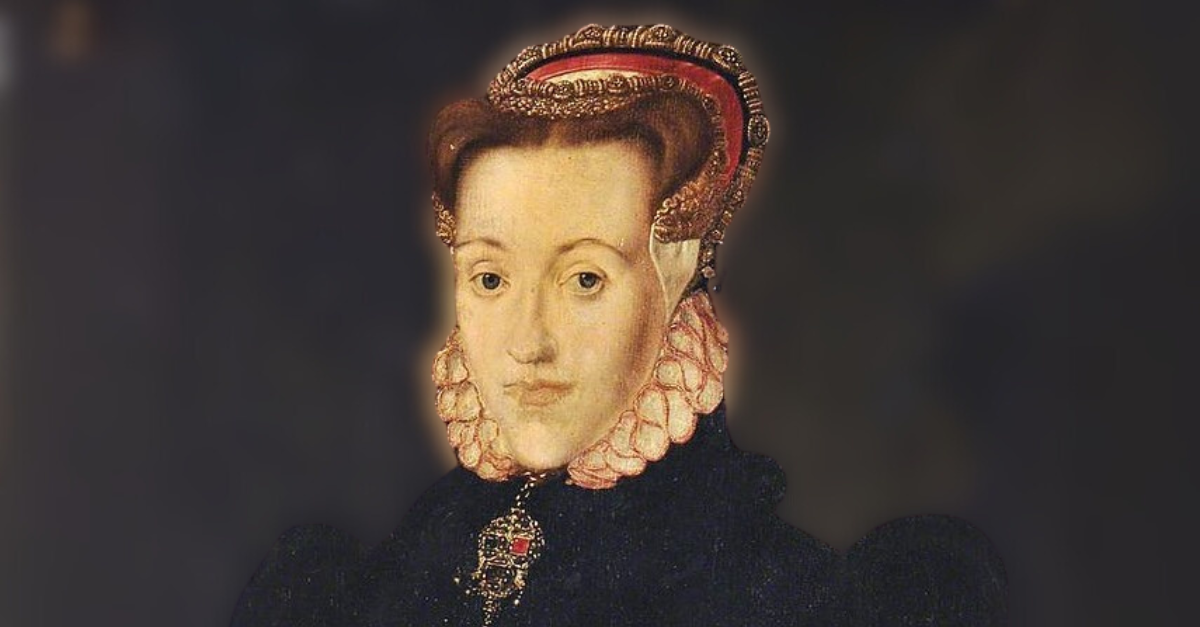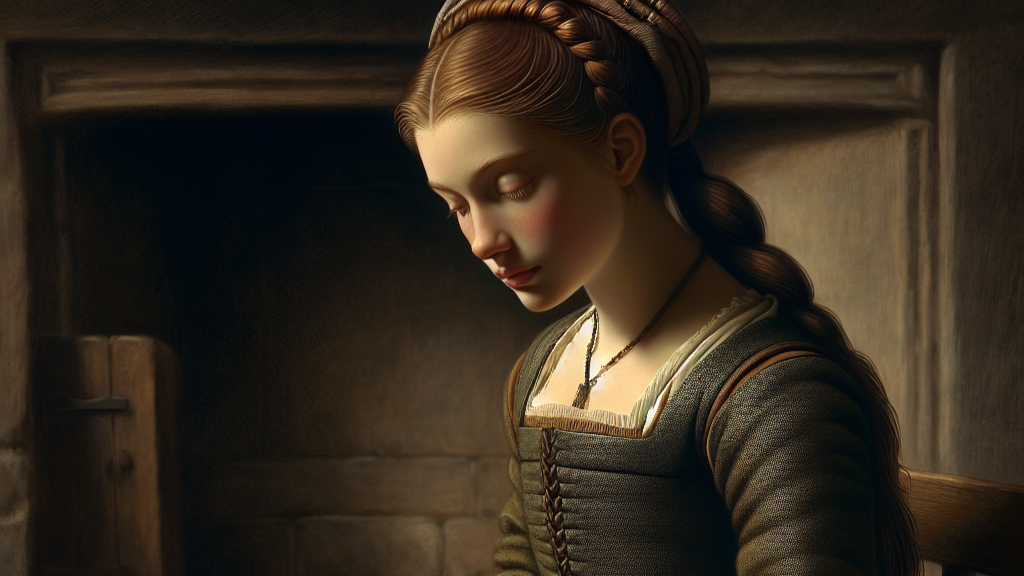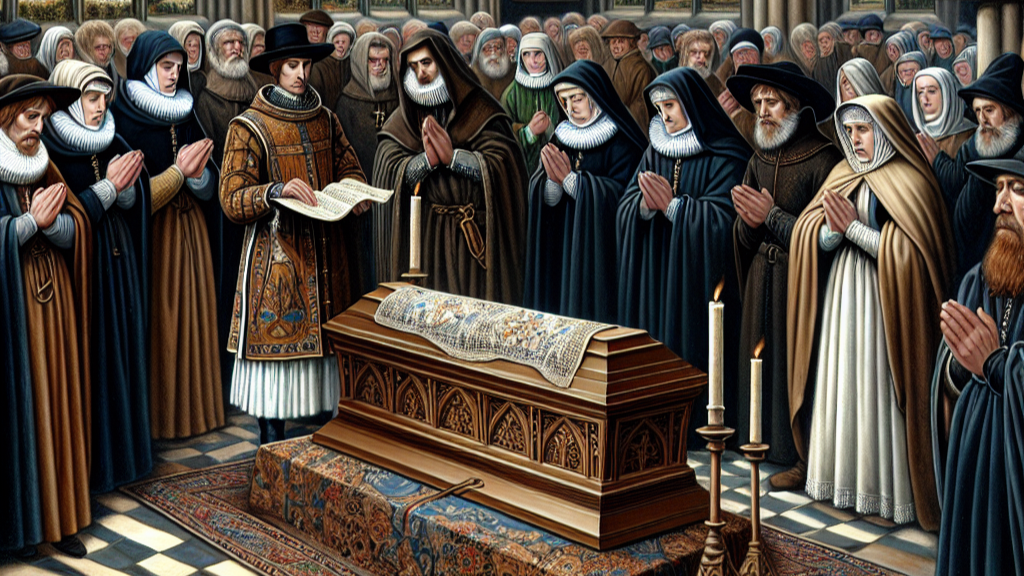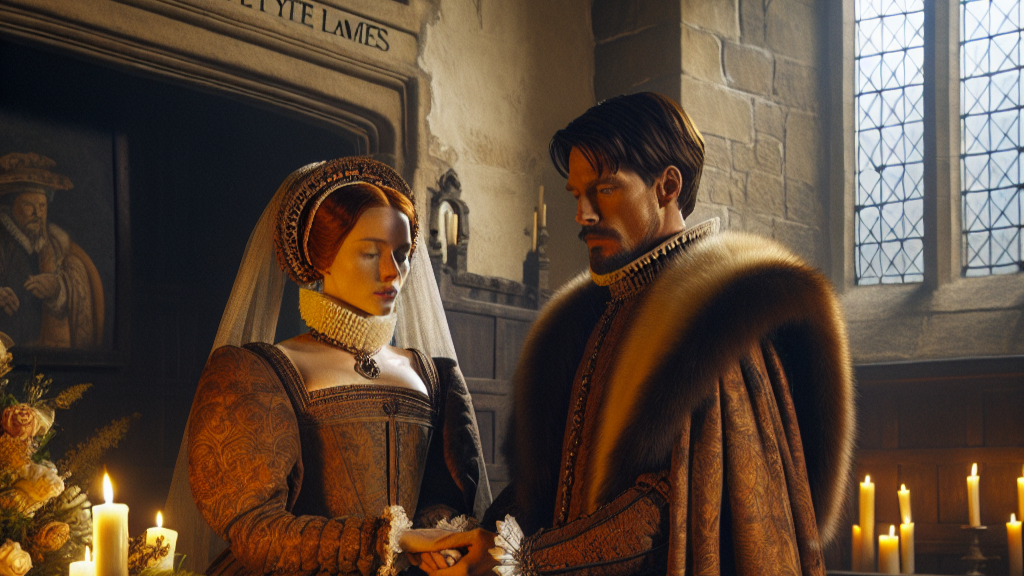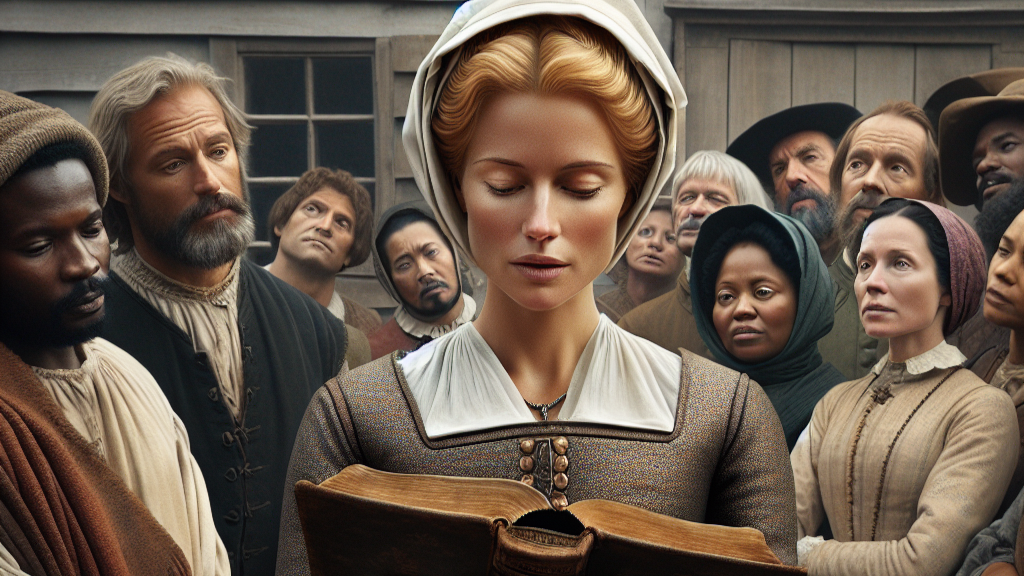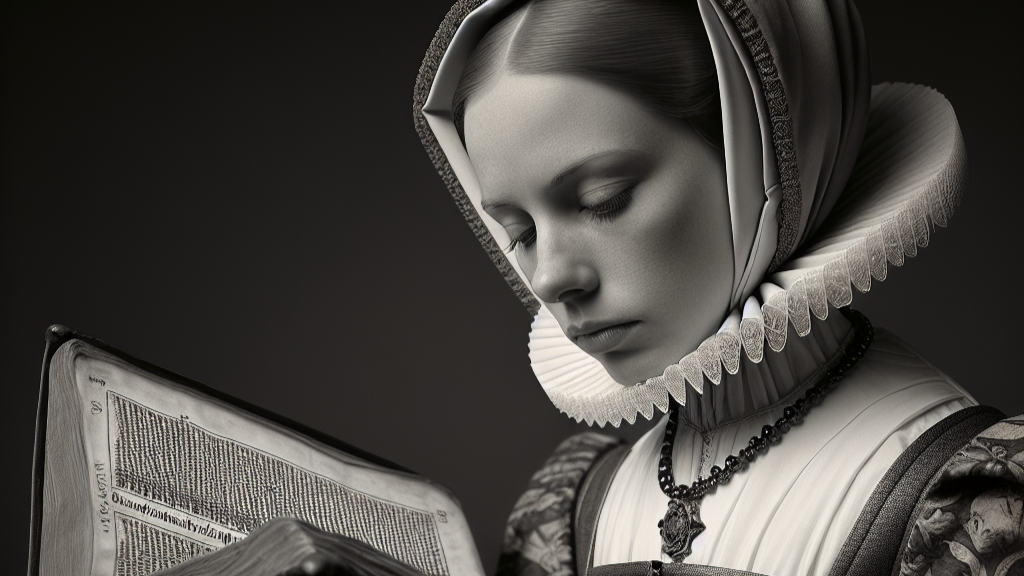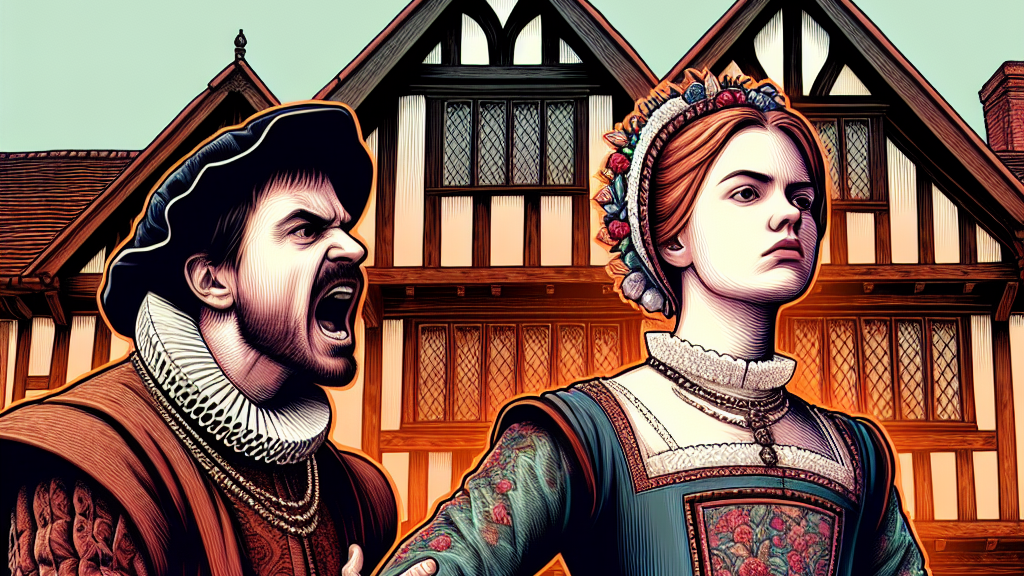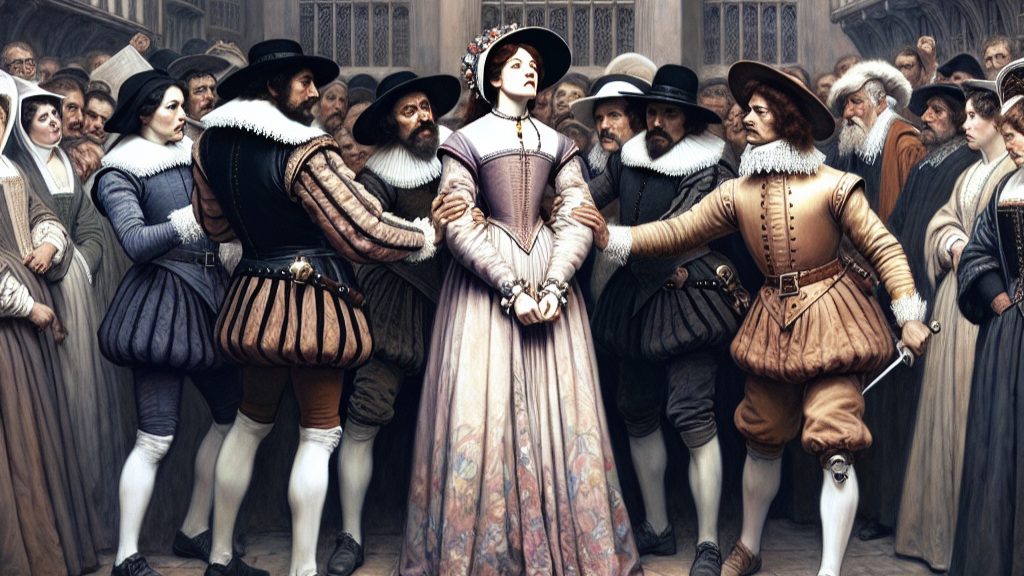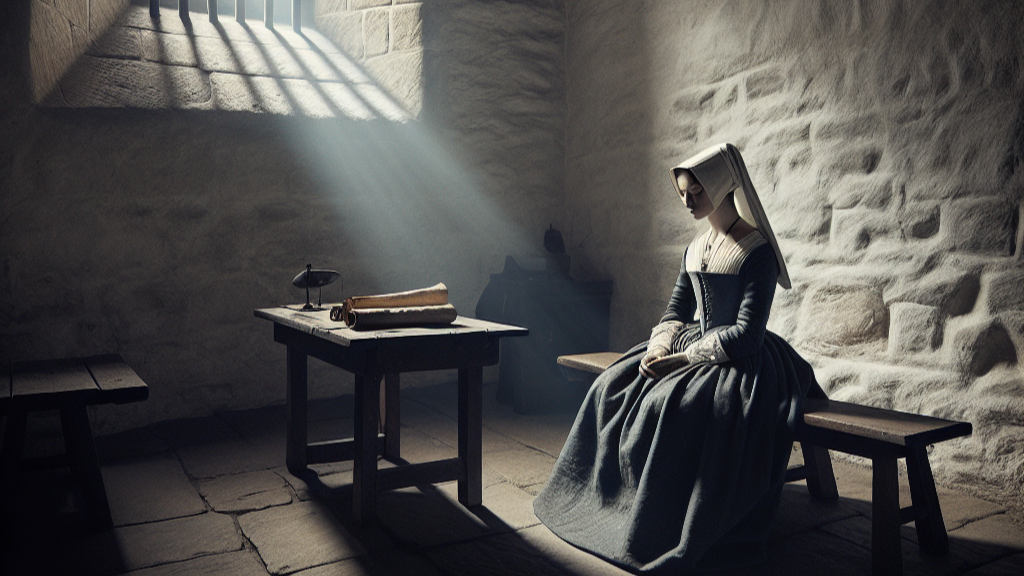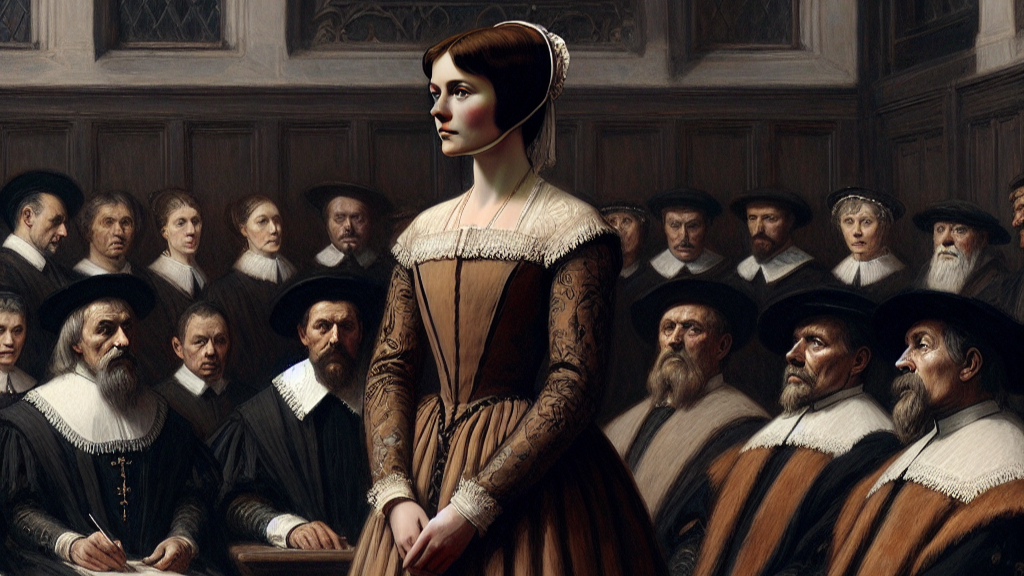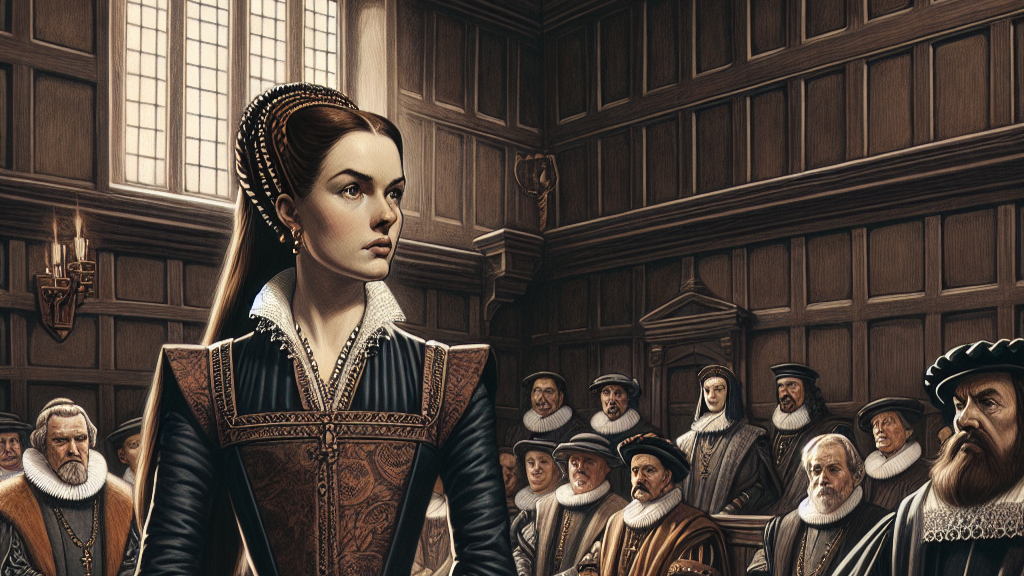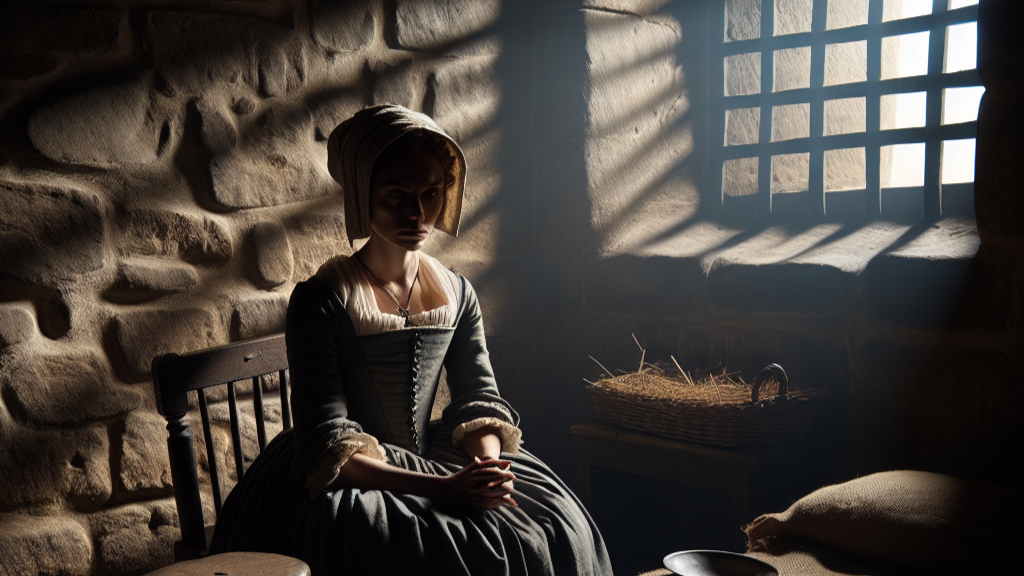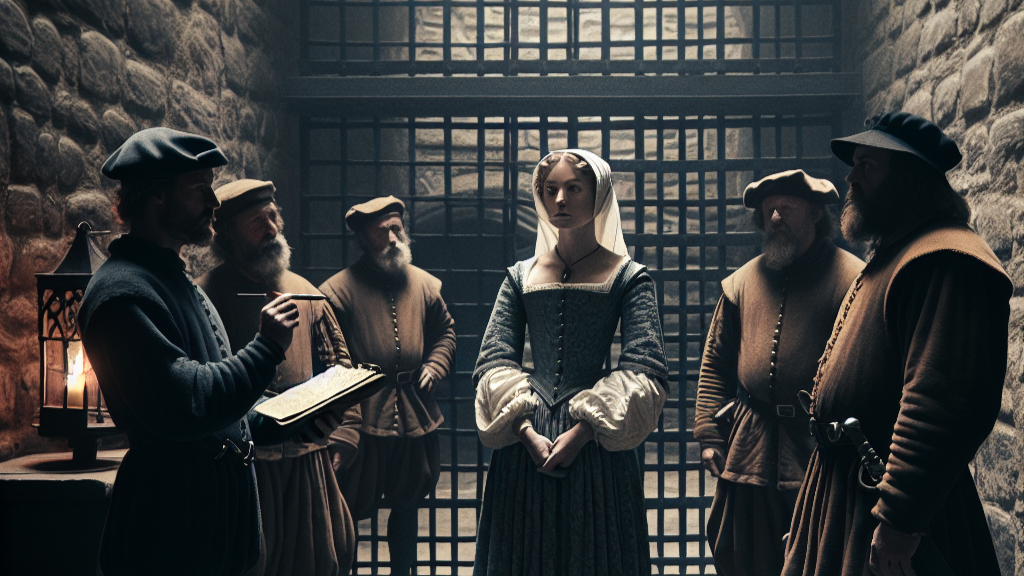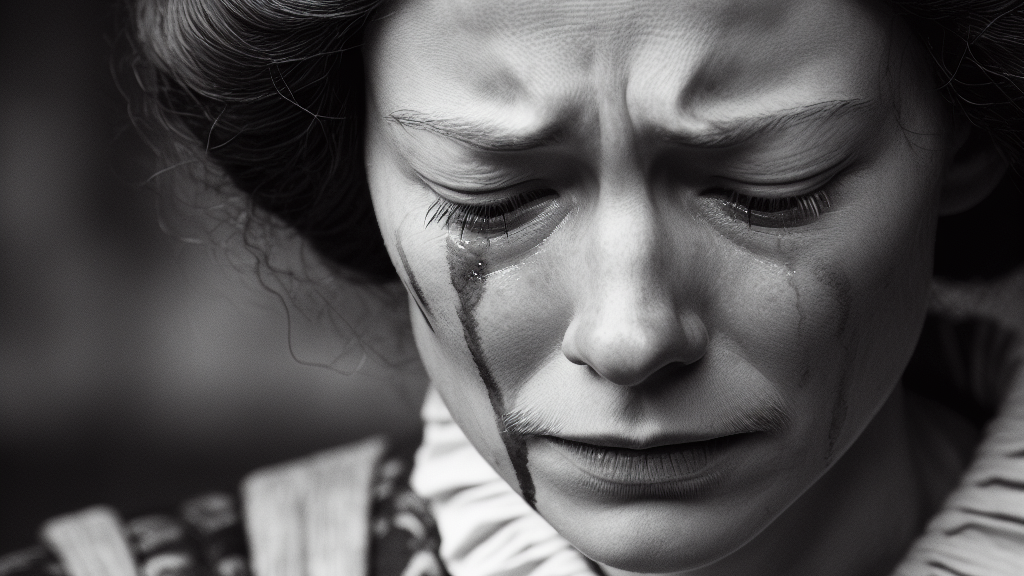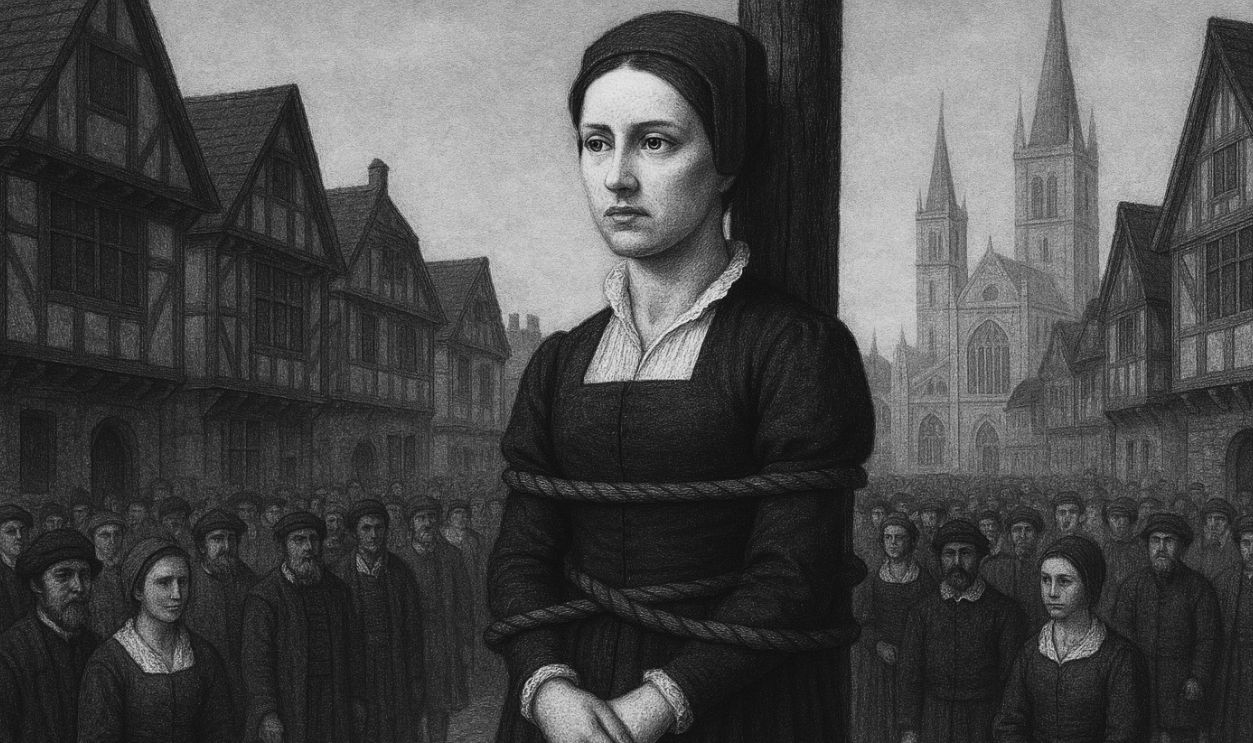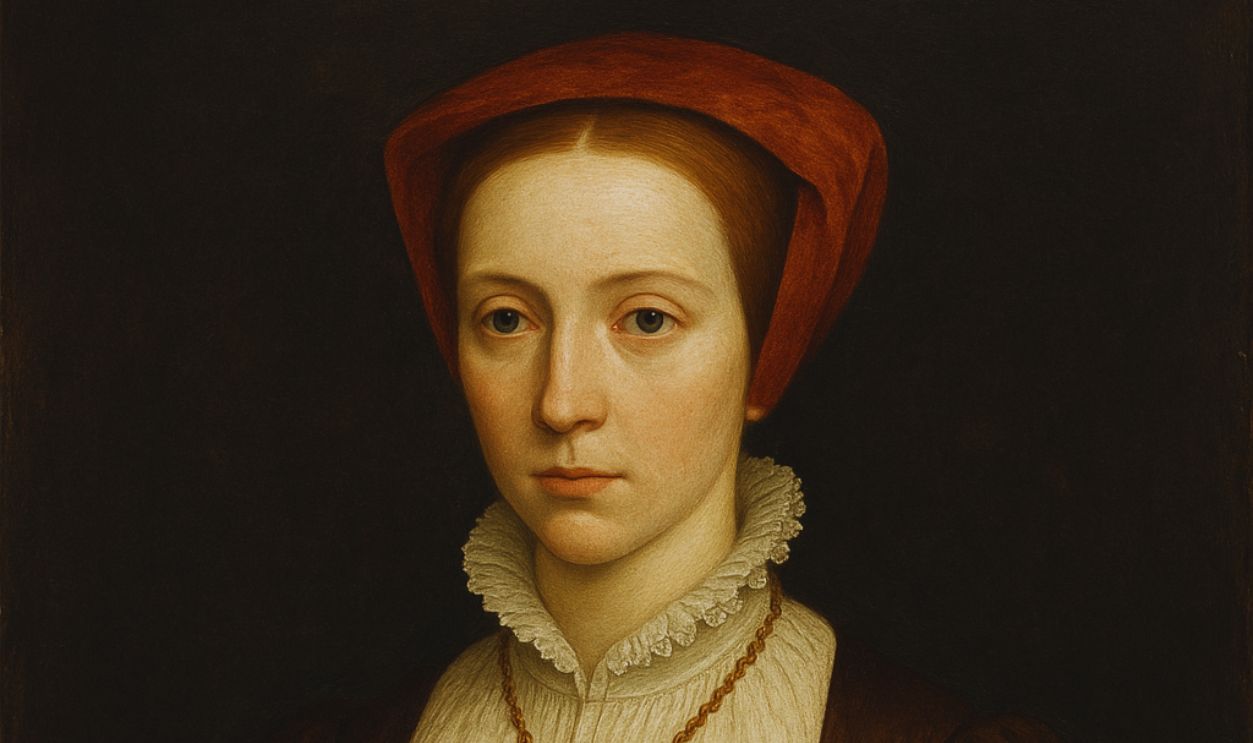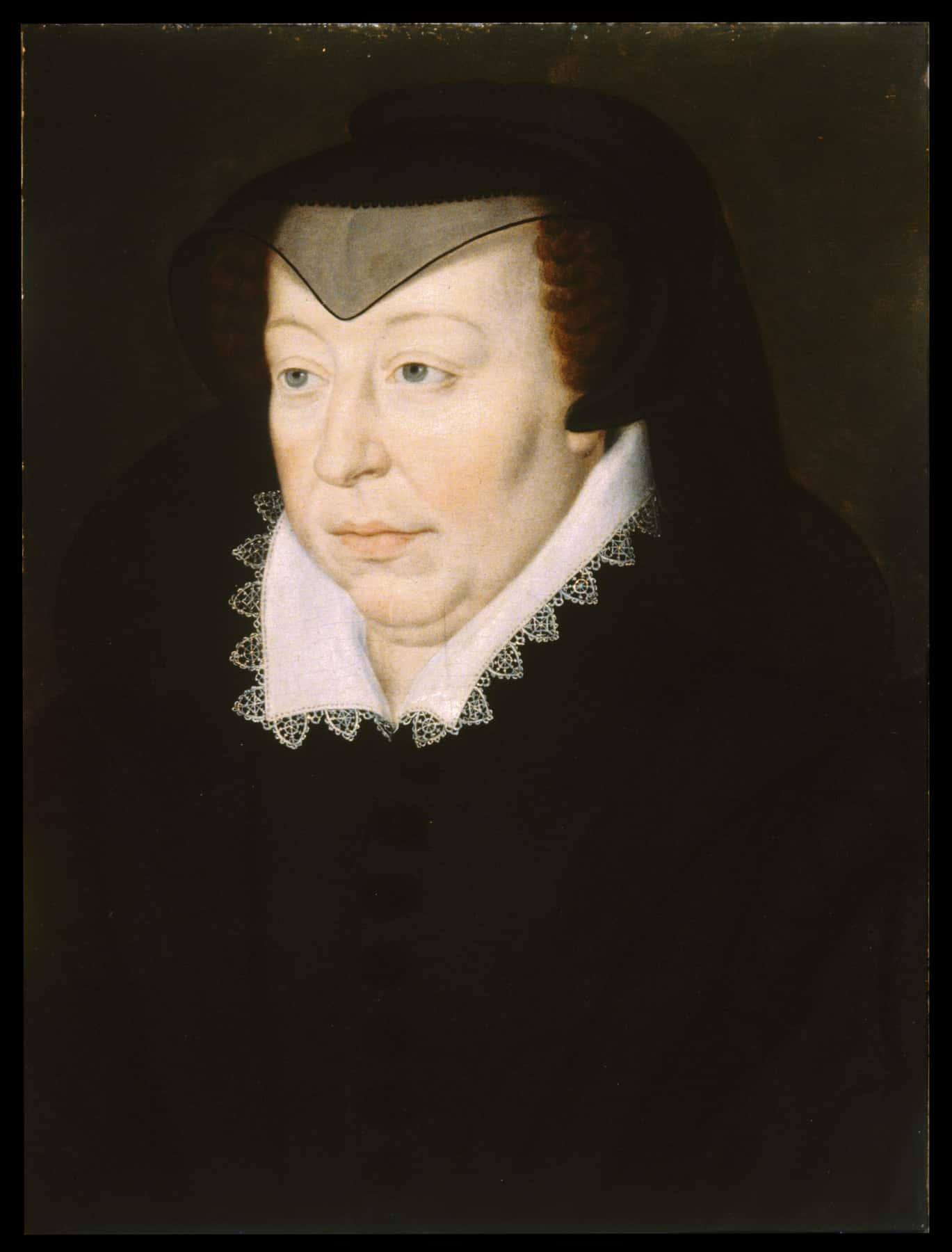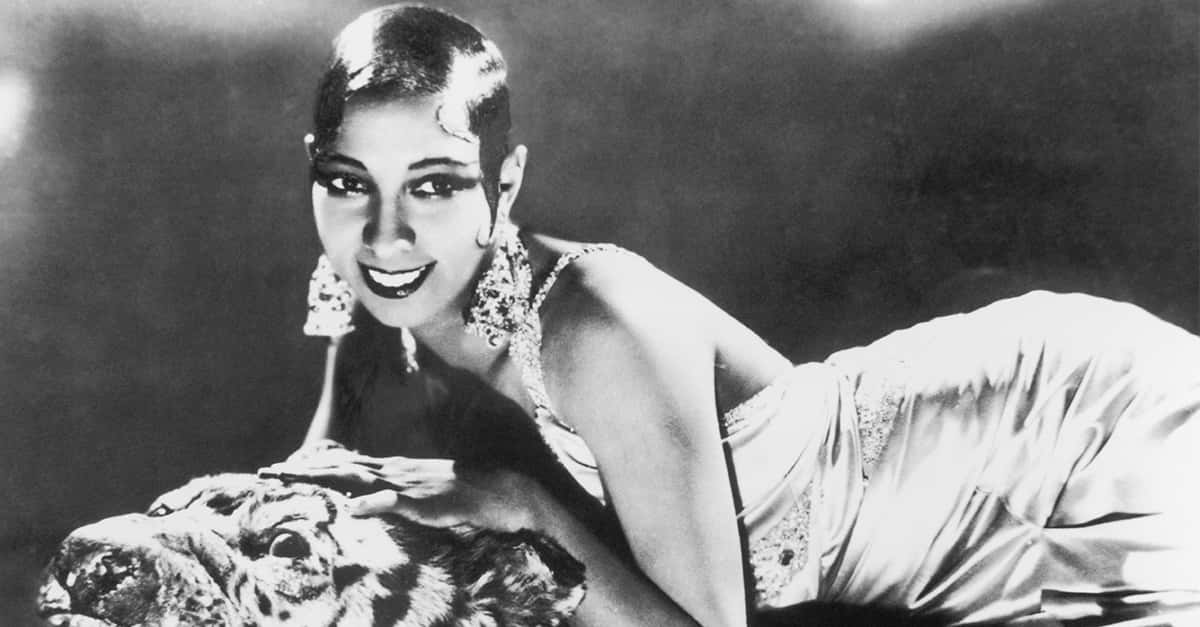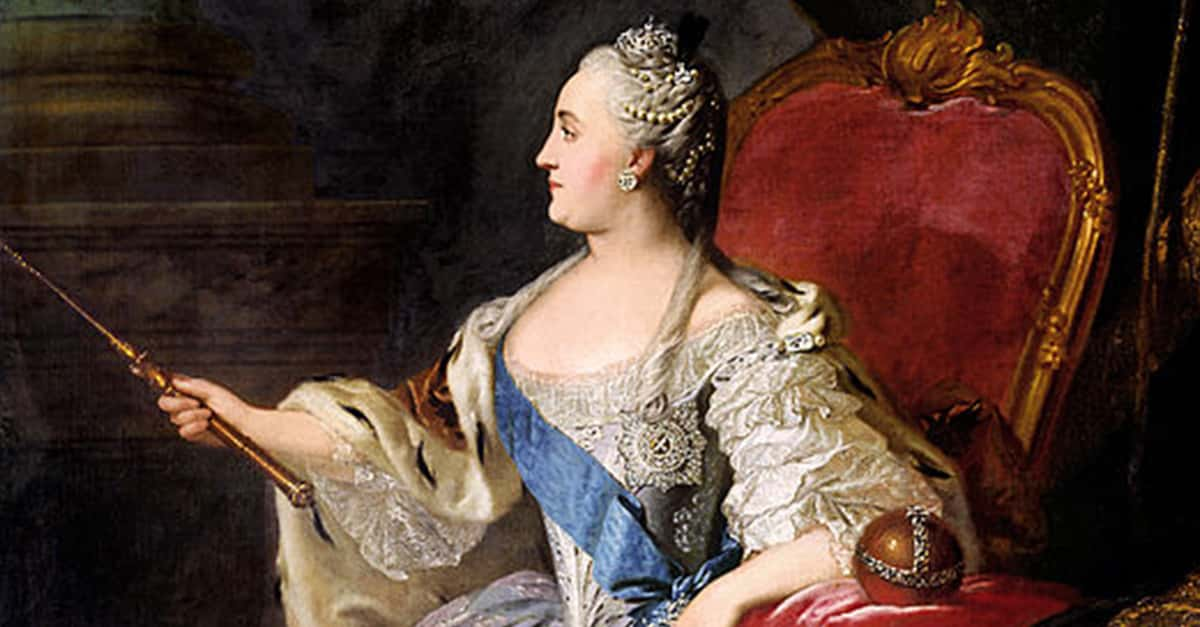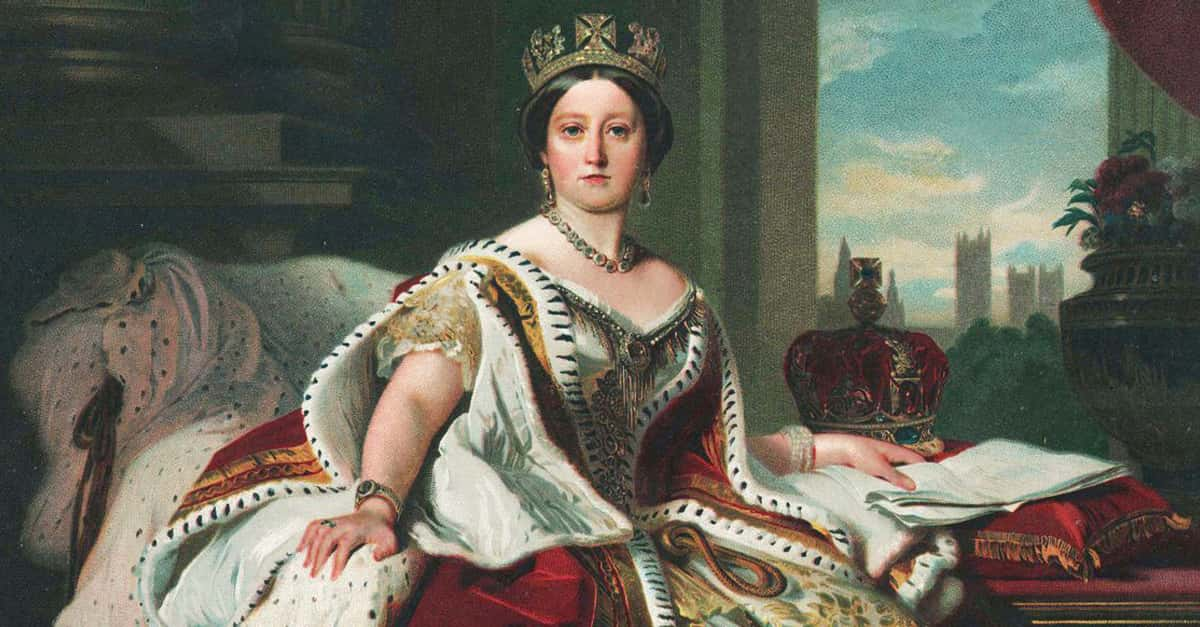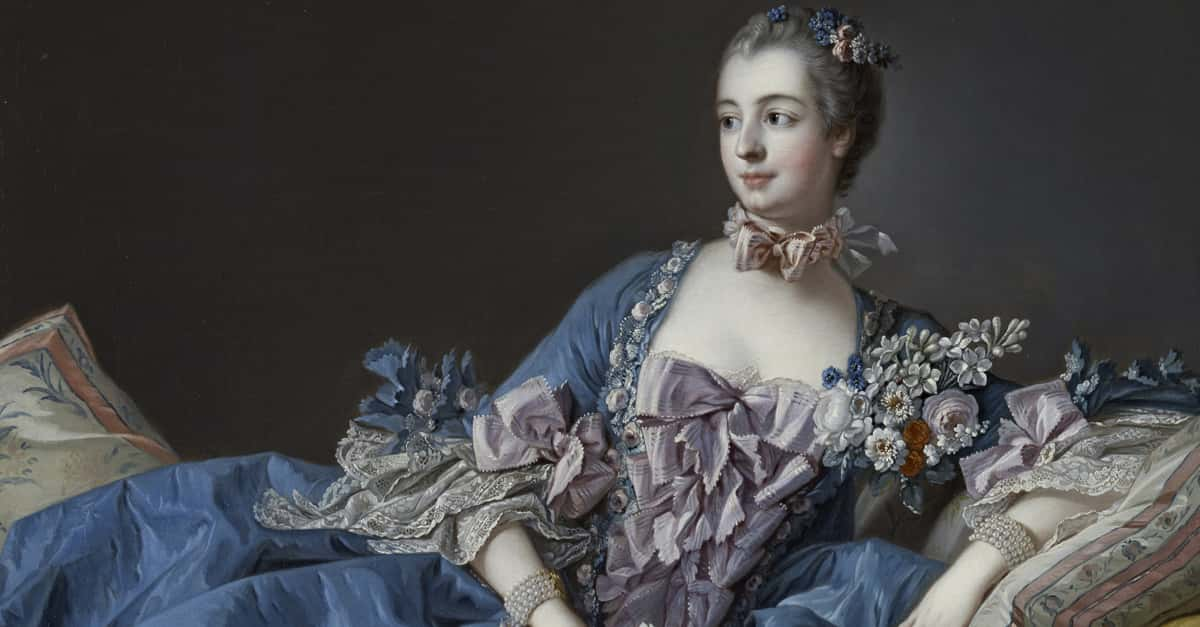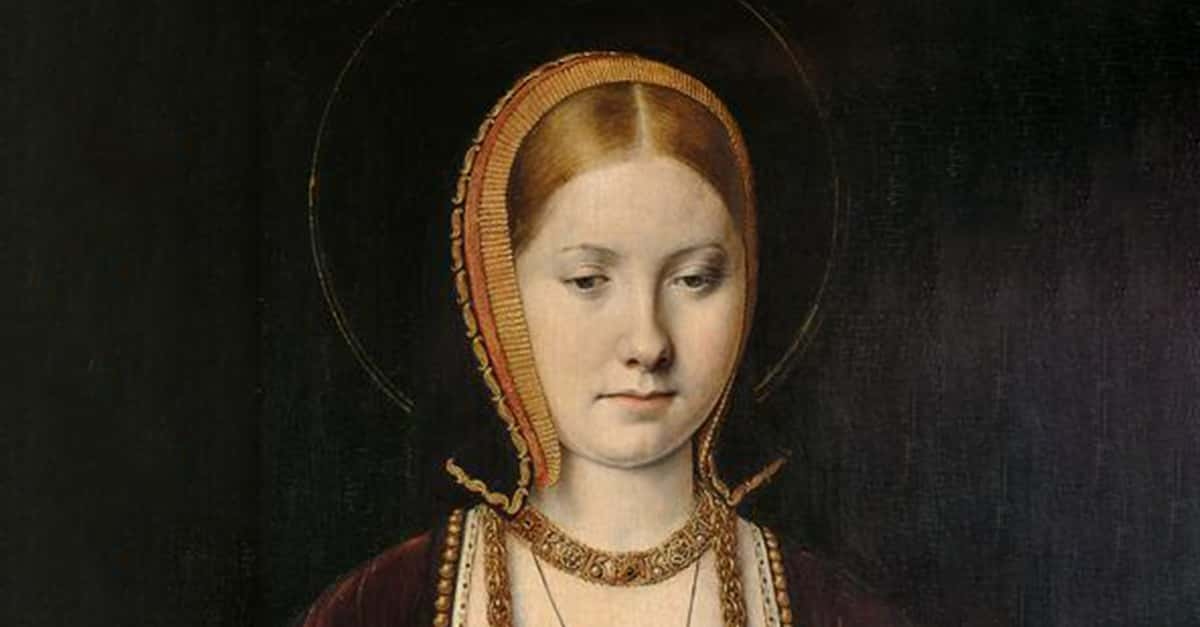Brave and Doomed
For a time, no woman was feared more in the court of King Henry VIII than the radical Protestant Anne Askew—and for very good reason. With the things she knew, Askew could have toppled the kingdom. But in exchange for facing down her enemies, all Anne got back was an utterly tragic end.
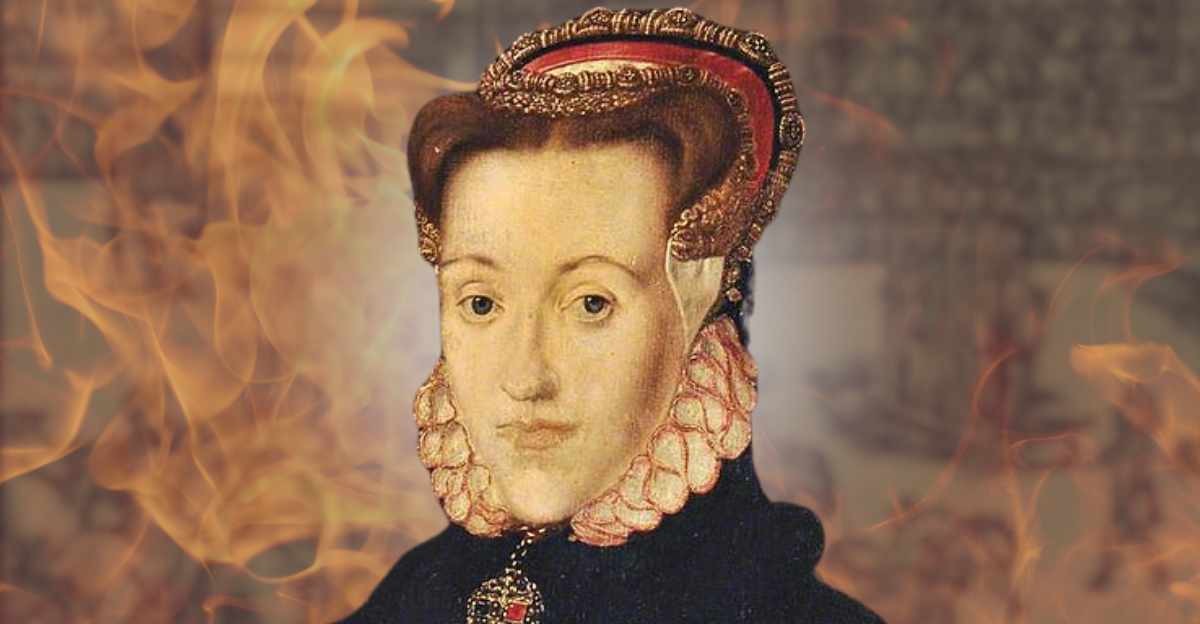
1. She Had A Connection To Anne Boleyn
Anne Askew’s father Sir William Askew was a well-to-do gentleman who moved in high circles in King Henry VIII’s court. However, this also meant that he participated in the downfall of Queen Anne Boleyn, acting as a juror in one of the trials of her co-accused.
Thus, Anne Askew came into the world with equal parts glory and infamy—much like how she left it.
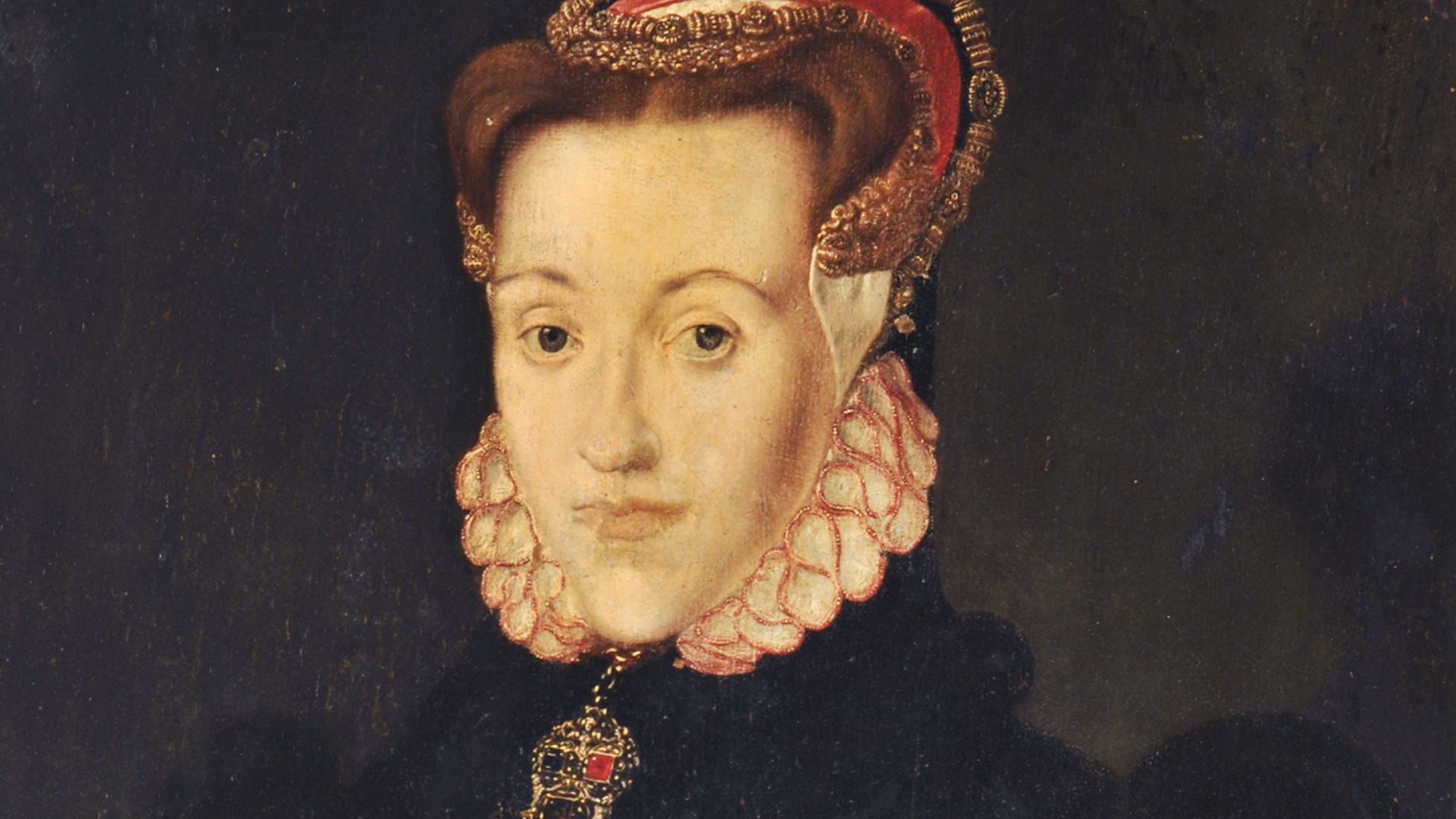 Hans Eworth, Wikimedia Commons
Hans Eworth, Wikimedia Commons
2. She Was Smart
Anne received at the very least an adequate education, and she took to learning with a voracious appetite. Like most people in her era, Anne was religious, but unlike most people in any era, her curiosity was boundless while her convictions were steadfast and courageous, and she used her learning to broaden and strengthen her ideas of faith.
Before she could fully explore these ideas, however, a twist of fate changed everything.
3. Her Family Was Business-Minded
In the mid 1530s, Anne’s father Sir William was planning to marry off her oldest sister, Martha, to their neighbor Thomas Kyme. Kyme was the scion of a prosperous-enough landowner, and the match was ultimately going to be a good business move for the family. Until, that is, a wrench got thrown into everything.
4. Her Sister Met A Sudden End
Around 1536, when Anne was just 15 years old, her older sister Martha perished, leaving their father Sir William in the lurch when it came to the marriage arrangement with the Kymes. If he pulled out now, he would end up losing money, nevermind the fact that he had the very reasonable excuse of his daughter dying.
So instead, Sir William came up with a new plan.
5. She Was A Replacement Bride
To save himself the money, Sir William simply swapped the teenaged Anne into her sister Martha’s place, informing her that she was now to marry Thomas Kyme whether she liked it or not. The next event was tragic. Anne was staunchly against the marriage, and fought against it with everything she had, but in the end her father forced it through anyway—and through manipulative means.
6. She Submitted Herself
According to sources, Anne was “compelled against her will” into the marriage, mostly because she believed she had to “[demean] herself lyke a Christen wife”. In other words, her family likely appealed to her religious duty, and Anne eventually caved and agreed to marry Kymes. Everyone would come to regret it.
7. She Was In The Middle Of An Uprising
In 1536, right around her proposed marriage, an event occurred that may have changed Anne’s life. That October, the so-called “Lincolnshire Rising” took place near her home. In the rising, devout Catholics protested King Henry VIII’s closing of the monasteries, which he’d done as a bid to shift England away from Roman Catholicism.
For Anne’s family, it meant near disaster.
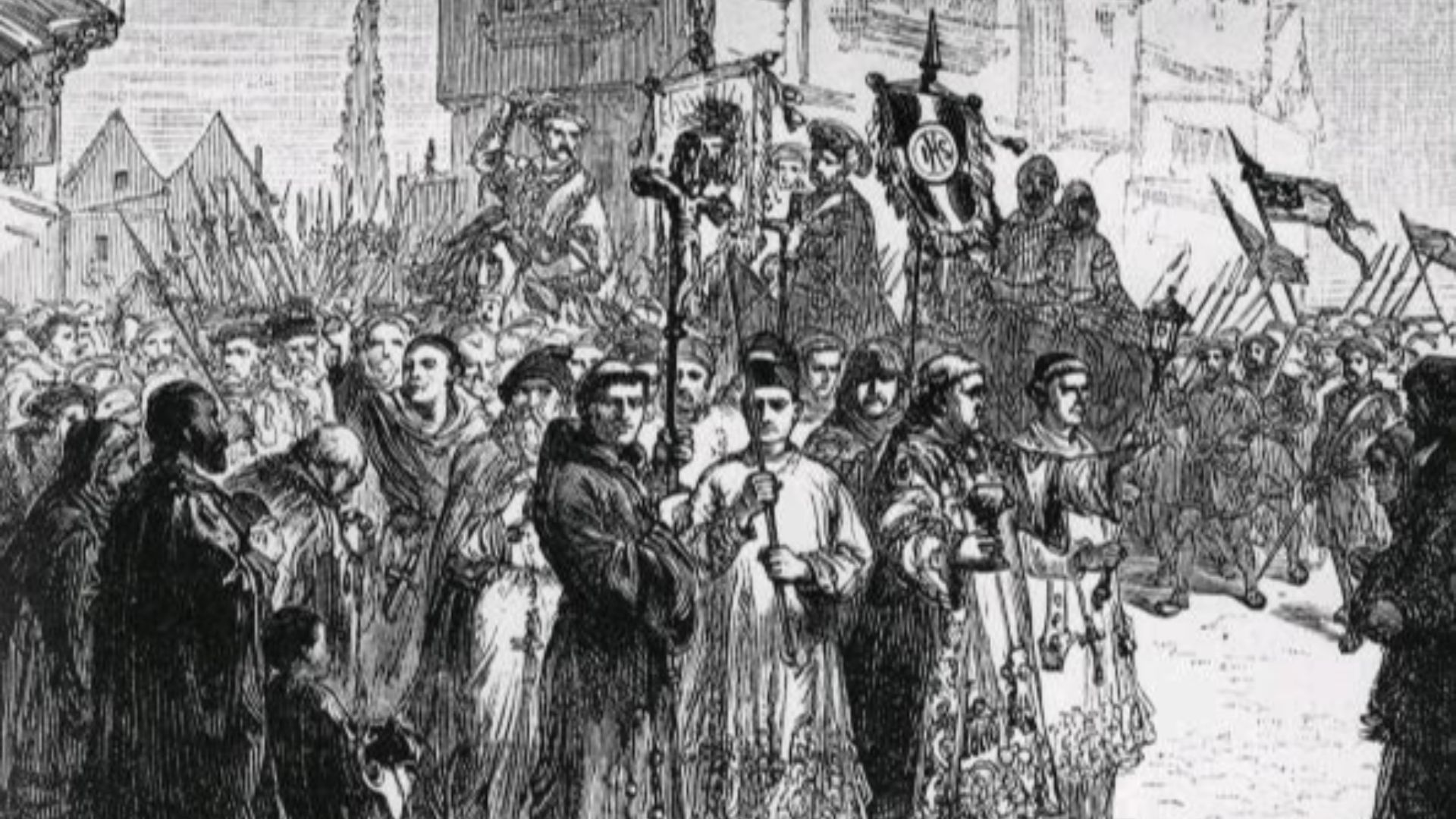 Unknown authorUnknown author, Wikimedia Commons
Unknown authorUnknown author, Wikimedia Commons
8. Her Family Was Captured
Anne’s father was Henry VIII’s man through and through, and the rebels apparently knew this. They captured the patriarch as well as Anne’s brothers, and men surveilled the Askew house closely over the coming days. Although the rising eventually failed and Sir William and his sons returned home, some historians believe it left a lasting—and fateful—impression on Anne.
 Shaw, Fred Kirk, Wikimedia Commons
Shaw, Fred Kirk, Wikimedia Commons

History's most fascinating stories and darkest secrets, delivered to your inbox daily.
9. She Started To Change Her Mind
It may have been during this time that Anne began to seriously question Catholicism and the kind of religion that the men who had kidnapped her father followed. In any case, Anne soon began to practice Protestantism, which questioned some of Catholicism’s most basic beliefs about the hierarchy and authority of the priesthood, among other points.
The timing couldn’t have been worse.
10. There Was A Rift In Her Marriage
Shortly after the Lincolnshire Rising, Anne Askew finally married Thomas Kyme. The marriage had one central and enormous problem. While Anne was becoming more Protestant by the day, Kyme was a strict and devout Catholic. Even so, he likely thought he could control her and appeal to her “good Christian wife” side.
He had no idea who he was dealing with.
11. Her Family Shunned Her
It was during this time that the first family fractures began appearing in Anne’s life. Not only did her husband Thomas Kyme disapprove of her Protestantism, but her brother Francis was also appalled at it, particularly when Anne began trying to spread her beliefs to her fellow men and women. Instead of listening, Anne upped the ante.
12. She Was Obsessed
One of Anne’s favorite pastimes, religious or otherwise, was to read the Bible aloud to people. After all, the idea of an accessible faith for everyone, not just priests, was one of the central tenets of Protestantism, and in reading aloud Anne was making it as accessible as possible. She was so devoted to this pastime, both her husband and brother forbid her from doing it.
Then again, they had their reasons.
13. She Was A Dangerous Woman
As harmless as it may seem to read the Bible aloud, Anne was engaging in a seriously dangerous activity. King Henry VIII might have just broken from the Pope and the Catholic Church to found the Church of England, but no one knew just where the country was going to land in terms of religion, and Anne’s beliefs were far from moderate.
To top it all off—well, she was a woman. Reading religion to people. Anne was placing herself perilously close to “Pope” levels, and the tension was palpable.
14. She Became A Mother
Despite her growing religious unorthodoxy, Anne did manage to play the good little wife two times with Thomas Kyme. The pair overcame their differences to have a couple of children together, which helped soothe over some of their marital issues. For a time, that is.
15. They Tried To Silence Her
In May 1543, Anne’s husband and brother won the right to be extremely smug when the government passed the Act for the Advancement of True Religion. Its laws were a personal attack on Anne. The Act explicitly banned any woman who wasn’t from noble or gentle stock from reading the Bible at all, insisted noble and gentlewomen could only read it in private, and decreed that no woman could read the Bible aloud.
It had one message, and it was a message Anne hated.
16. They Thought She Was Weak
Although Anne was a gentlewoman and so still could have access to her Bible in private, the Act was telling her and every other woman like her the same thing: Stop trying to be a radical Protestant by discovering your faith for yourself; let conservative men do it for you.
Unfortunately for these men, nothing brought out Anne’s feisty side more than someone telling her she couldn’t do something.
17. She Didn’t Know How To Give Up
In the face of this Act, Anne came up with a rebellious plan. She wasn’t willing (yet) to completely flout the system, but she did know how to push its limits and expose its flaws. Suddenly, her biggest dream was to travel to the nearby Lincoln to see its cathedral’s Bible, thus showing her face in public as a progressive religious woman.
It was not an easy plan to execute.
 Wenceslaus Hollar, Wikimedia Commons
Wenceslaus Hollar, Wikimedia Commons
18. Her Husband Forbid Her
Anne faced severe opposition when it came to her Lincoln pilgrimage. Her friends warned her off the idea, telling her, as she put it later, “the [priests] wolde assault me and put me to great trouble”. More than that, her husband explicitly forbid her from going.
Evidently, he still didn’t know how to handle his headstrong wife, because, again, “you can’t” wasn’t something she was going to listen to.
19. She Made Her Pilgrimage
In the end, Anne did go to Lincoln, because of course she did, and she wasted no time stirring up trouble. She stayed in town for six days, making sure to go to the cathedral and read her Bible in front of any member of the public that was in the building with her.
Anne was practically daring someone to say something…and she got her wish.
20. She Threw A Perfect Insult
According to Anne, one man—and only one man—actually confronted her about her illegal activities during her time in Lincoln. Her response to this was pitch perfect. She later claimed that what he said was of so little importance to her, she couldn’t even remember what it was.
But Anne was playing with fire.
21. She Was A Black Sheep
By the time Anne returned to her home, she was fully the black sheep of the Askew family. This didn’t faze her: She continued to read aloud from her Bible to anyone who would listen, and also to a lot of people who wouldn’t. Eventually, the local priest ended up complaining about Anne to Thomas Kyme…and his reaction was infamous.
22. Her Husband Threw Her Out
Around 1544, Anne’s life took a violent turn. Thomas Kyme, fed up with his rebellious wife and mortified that his neighbors knew he couldn’t “control” her, likely attacked her before certainly throwing her out of their home and separating her from their children.
Anne must have been rattled, but she didn’t give up.
23. She Wanted A Divorce
According to some sources, Anne was actually happy about her dismissal from the Kyme household, since she had been thinking about how to divorce Thomas anyway. In any case, she didn’t try to get Kyme back: In the blink of an eye, she had gone back to her maiden name and was seeking out a legal split.
It likely wasn’t what Thomas Kyme had been expecting, but Anne kept right on going.
24. She Went On A Quest
Anne now decided to make things even more official, and traveled to London—with just one maid in tow—to petition the chancery court for her legal separation. Her brother Edward was already in the capital, but, as the cup bearer to Henry VIII, he was unlikely to help her with her woes.
Instead, Anne sought out a new kind of friend.
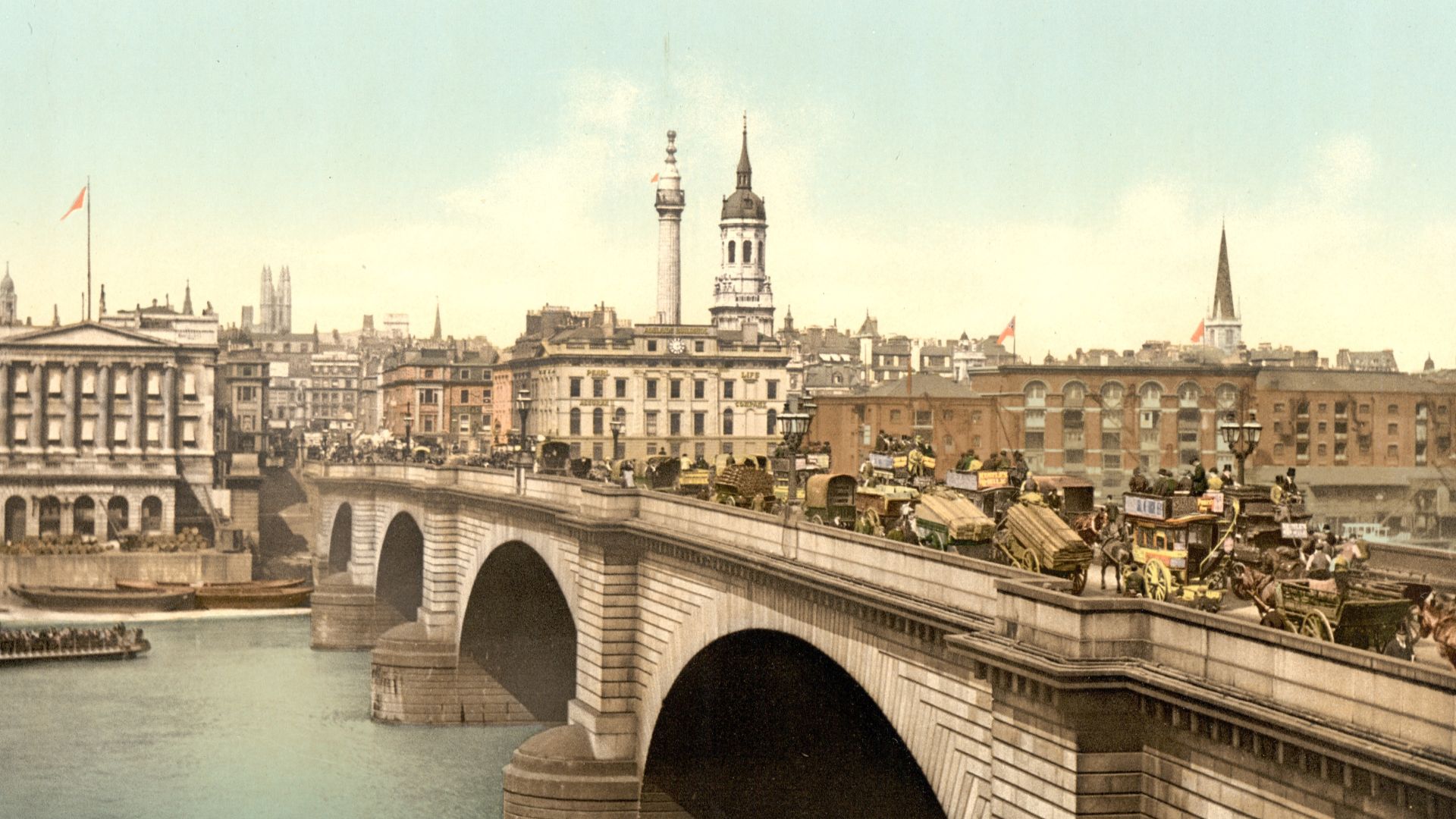 Photochrom Print Collection, Wikimedia Commons
Photochrom Print Collection, Wikimedia Commons
25. She Met Powerful Friends
It was a cousin of Anne's who truly came through for her. Christopher Brittayn, a London lawyer, was part of a progressive-minded group who tended to share Anne’s views, but who also had powerful connections both within and without the court of Henry VIII.
They helped Anne get on her feet…and they also put her in shouting distance of royalty.
26. She Was Once Removed From The Queen
One of Anne's new friends was the Countess of Hertford. Through her, Anne became connected to one of the most powerful women in England: Catherine Parr, the sixth and final wife of Henry VIII, was a close friend of the countess. But a friendship with the countess wasn’t all Anne and Catherine shared.
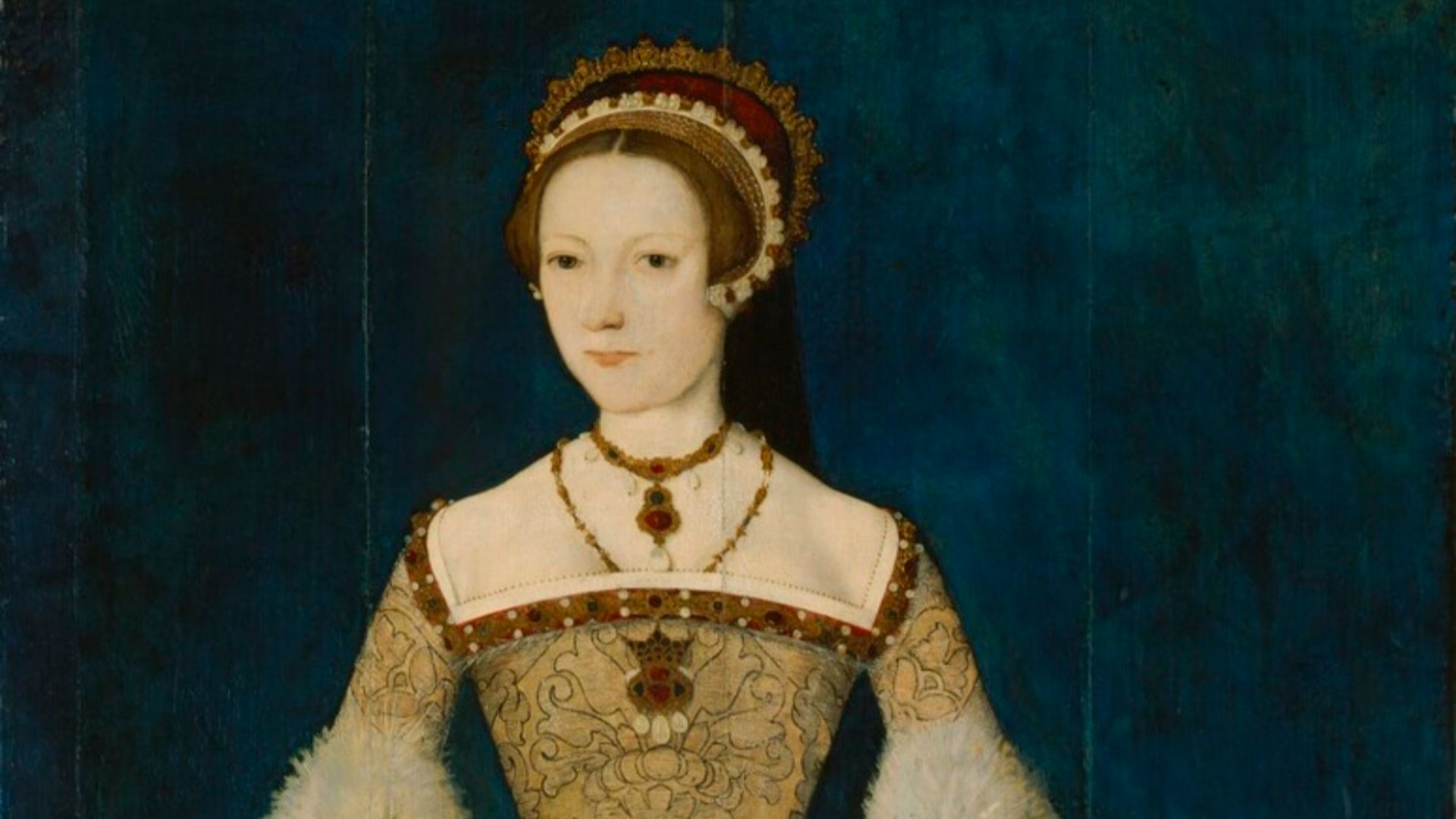 Attributed to Master John, Wikimedia Commons
Attributed to Master John, Wikimedia Commons
27. She May Have Known A Royal Secret
At this point, for all his break from the Roman Catholic faith, King Henry VIII and his advisors were actively trying to shut down more radical Protestantism. Only, his own queen was against him: Catherine Parr also held Protestant beliefs, though she tended to keep these under wraps from her husband and his men.
While it’s unclear if Anne ever met the Queen of England, their fates would be inextricably tied together.
 After Hans Holbein the Younger, Wikimedia Commons
After Hans Holbein the Younger, Wikimedia Commons
28. She Couldn’t Stay Quiet
As Anne discussed religion in her new milieu, her courage and conviction only swelled, especially after she connected with larger figures in the movement such as courtier John Lascelles. Soon, Anne took an enormous risk. She began preaching in the streets of London, putting her beliefs on display once more.
This time, it was a step too far.
29. They Arrested Her
The authorities now had their eyes on Anne Askew, and in March of 1545, when she was just 24, they arrested her for flouting the tenets of the Church of England. In more remote places like Lincoln, Anne had flirted with breaking the law before, but now she had done it in the capital of England and the seat of the crown. She was in grave danger, and so was the Queen of England.
30. She Held An Incendiary Letter
According to Anne’s nephew, who gave his account afterward, Anne had been detained after the authorities intercepted a letter she had written seeking contact with Queen Catherine Parr. As a result, her interrogator—Sir Martin Bowes, the Lord Mayor of London—took her questioning extremely seriously.
But when Bowes drilled her on her beliefs, he got more than he bargained for.
 English School, Wikimedia Commons
English School, Wikimedia Commons
31. She Schooled A Mayor
Bowes’ interrogation of Anne was part actual investigation, part chastisement for her heresy. As part of it, he informed her that Saint Paul had forbidden women from speaking the word of God. Anne’s reply was quick and devastating. She corrected the Lord Mayor on his scripture, countering that Saint Paul had only told women they couldn’t preach in front of a congregation.
Even in the lion’s mouth, Anne Askew simply couldn’t back down. She was about to pay for it.
32. They Tried To Convert Her
To teach her a lesson, Bowes ordered that Anne be promptly imprisoned, with the Bishop of London visiting her daily to instruct her on the proper Catholic faith. After almost 12 days in prison, her cousin and de facto lawyer Christopher Brittayn—who had been working tirelessly behind the scenes to free her—managed to convince the Bishop to examine Anne himself and determine her guilt.
It was a second chance, but it went almost as badly as it possibly could.
33. She Wouldn’t Recant
In his examination, the Bishop of London accused Anne of various reformist beliefs, and insisted that she complete a document declaring her orthodox faith and recanting her unseemly Protestant beliefs. When he read what she wrote, his blood ran cold. Anne had “signed” the paper by saying only that she “believed all manner of things contained in the faith of the Catholic church”. In other words: “You got some things right, guys. Good for you.”
The Bishop was instantly furious, and only one thing saved Anne.
34. She Had An Odd Defense
Anne was never going to back down from or even qualify her Protestant faith, but luckily her cousin Brittayn was a quick thinker. He managed to placate the Bishop, albeit by trotting out that old saying, “Women are stupid”. Verbatim, he called for mercy because of Anne’s “weak woman’s wit,” and got her powerful friends to join in.
It worked…sort of.
35. She Got Lucky
After one more night in a cell, Brittayn finally managed to secure Annes’s release after 12 days behind bars. Even then, the authorities forever after would claim that part of the reason for her release was that Anne finally renounced her beliefs—a claim Anne would vehemently deny to the end of her days.
Either way, Anne was free, and her spirit was very much unbroken. It would be her downfall.
36. She Went To Court
Upon winning her freedom, Anne pursued her own path with even more vigor. In particular, she renewed her efforts to win a divorce from her husband Thomas Kyme. Soon, this quest landed both her and Kyme before the Council at Greenwich and the Bishop of Winchester in 1546 to explain the history of their relationship.
In one version of Anne’s story, this might have ended with her freed from the marital bond, too. Tragically, fate had different plans.
37. She Was Under Investigation
Anne’s reputation preceded her, and over the course of the court appearance, the questions turned from her marriage to Kyme to her religious, reformist beliefs. Anne must have been truly afraid this time, because instead of backtalking the Bishop of Winchester as she usually would, she mostly tried to evade his questions. It did her no good.
38. Her Husband Abandoned Her Again
In response to Anne hedging his questions, the Bishop dealt her a horrific punishment. Barely a year since her last detainment, he put her in prison again, this time at the terrifying Newgate. As for her husband Thomas Kyme? He returned home, and left her to her harrowing fate.
39. They Wanted Answers
Over the next days, the Bishop of Winchester and his cronies kept interrogating Anne—but she soon realized their questions had a strange, pointed quality. They kept asking her to name her fellow reformists, but also specifically asked her about the Countess of Hertford and some of the countess’s friends.
At that point, the deep reason for her detainment must have dawned on Anne.
40. They Had A Target In Mind
The names that the interrogators kept returning to were people who were in the inner circle of Queen Catherine Parr; the Bishop and his friends were clearly trying to make a case against the Queen of England for heresy and “save” King Henry from her influence. Indeed, they had even searched the queen’s rooms for offending documents, though they’d found nothing.
But if they’d come for a tell-all confession, they’d come to the wrong woman.
 Attributed to Master John, Wikimedia Commons
Attributed to Master John, Wikimedia Commons
41. She Spared Her Queen
Anne Askew didn’t just refuse to give up Queen Catherine or her friend the Countess of Hertford, she refused to give up a single name of anyone at all to her interrogators. Queen Catherine, married as she was to a man who had killed wives before, may have owed her life to Anne that day.
Ane continued to keep quiet over the grueling two-day questioning. Then the interrogators turned the screw.
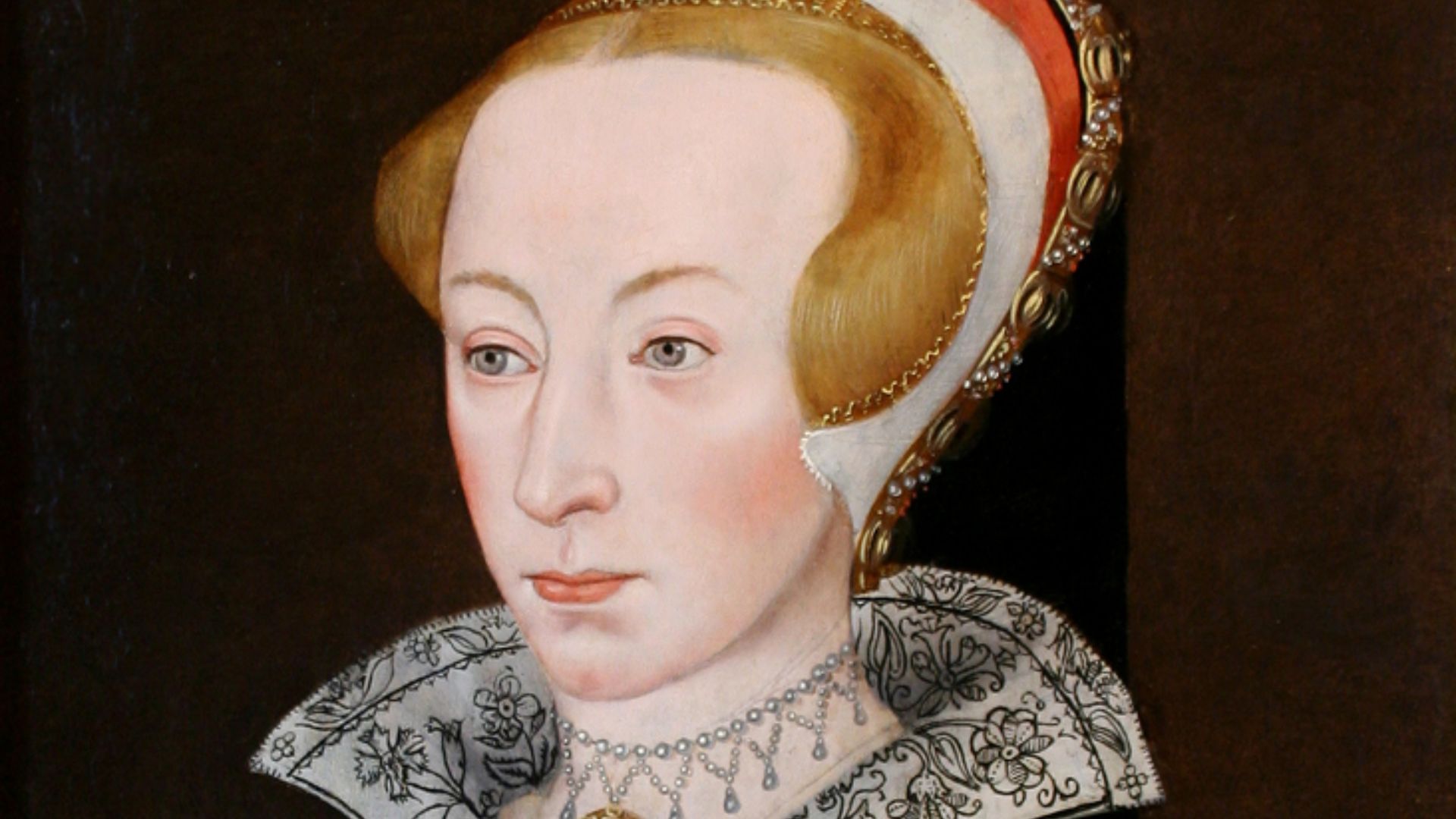 Hans Holbein, Wikimedia Commons
Hans Holbein, Wikimedia Commons
42. They Formally Charged Her
With no information coming from Anne, her enemies went nuclear. On June 28, 1546, they arraigned her for heresy in London with three other men. It’s a testament to Anne’s steadfast nature that while one of the men on her docket recanted, Anne still stood firm. But it sealed her fate.
43. They Sent Her To The Tower
In the face of her obstinance, the court condemned Anne for execution, explicitly denying her any trial or jury, and then had her shipped off to the infamous Tower of London. By this point, Anne had more than proved she could withstand their interrogation…but the men didn’t think so. They tried one last, horrific time.
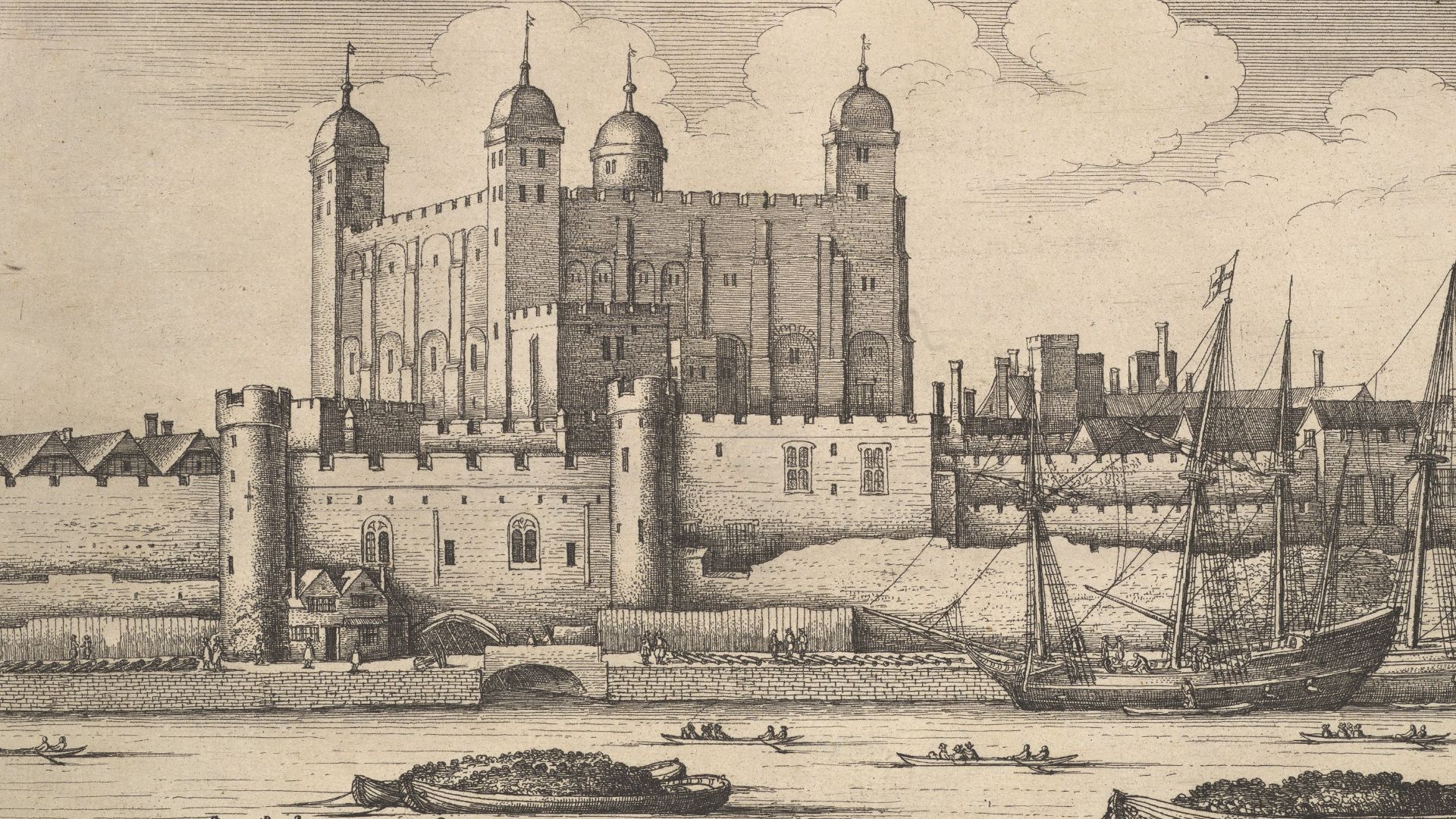 Wenceslaus Hollar, Wikimedia Commons
Wenceslaus Hollar, Wikimedia Commons
44. She Went On The Rack
Anne’s interrogators at the Tower of London were Thomas Wriosthesley and Richard Rich. They crossed a brutal line. After asking her again to name names and receiving no answer, they made her take off everything she was wearing except her shift and put her on the notorious “rack,” a device designed to stretch out and dislocate limbs.
Once they strapped Anne’s wrists and ankles, they asked her again for a confession. They again got nothing. Then the travesty began.
45. Her Guard Gave Up
Anne’s torment was so awful, she fainted from the pain, requiring the men to take her off, revive her, and put her back on—twice. Eventually, the Lieutenant of the Tower, who was physically operating the rack, left the tower and begged the king to let him stop, leaving Wriothesley and Rich to do the work themselves. Undaunted, they ended up dislocating her elbows and knees, and pulling her shoulders and hips from their sockets.
Throughout, Anne Askew cried out in agony, but she named no names.
46. It Wasn’t Supposed To Happen
Eventually, the Lieutenant of the Tower stopped the proceedings, by which time Anne was a crumpled, broken body unable to stand. Everyone there knew the dark secret. As a gentlewoman who was already condemned, there was almost no precedent for Anne to be tormented in this manner. Yet here she was all the same, having given up nothing.
Anne would take her last, gasping breaths with the same courage.
47. She Had To Be Dragged To The Stake
After this nightmare on the rack, Anne’s execution day finally came. Still not recovered, she had to sit on a chair in a cart—in agony even then—as they pulled her up to the grounds where she and her fellow heretics were to be burned at the stake.
Attendants dragged her from the chair and tied her, upright, onto the stake with a chain. Then she had one last moment of glory.
 Unknown authorUnknown author, Wikimedia Commons
Unknown authorUnknown author, Wikimedia Commons
48. She Went Down Fighting
As was custom, a bishop addressed the prisoners that day and asked them one last time to repent of their sins and recant their beliefs. Despite the great pain she was in, Anne was reportedly extremely focused on the words coming out of his mouth. Even facing death, she was not afraid of speaking her mind and her truth.
Anne refused to repent or recant, throwing the bishop's own words back in his face. As he spoke, she would praise him when she agreed with him, but she'd also shout "There he misseth" whenever she didn't, leaving an unforgettable mark on the public ceremony and proving that she would never be ripped away from her faith.
49. She Didn’t Go Alone
On July 16, 1546, Anne Askew—radical Protestant, mother of two, aspiring divorcee—was burned to death at the age of 25. In a cruel twist, beside her that day was none other than her Protestant friend John Lascelles, but at the very least she did not become a martyr for her faith alone.
50. She Was A Historical Anomaly
In the final count, Anne Askew is one of only two women (the other being rebel Margaret Cheyne) to suffer torment in the Tower of London and be burned at the stake. It's a dubious honor, but Anne’s unshakeable faith struck fear in the hearts of a Tudor England going through monumental religious change, and those Tudors made her pay for it dearly.
She died, however, knowing she kept her integrity—and having perhaps saved a queen.
You May Also Like:
This Queen's Passing Led To Shocking Miracles

